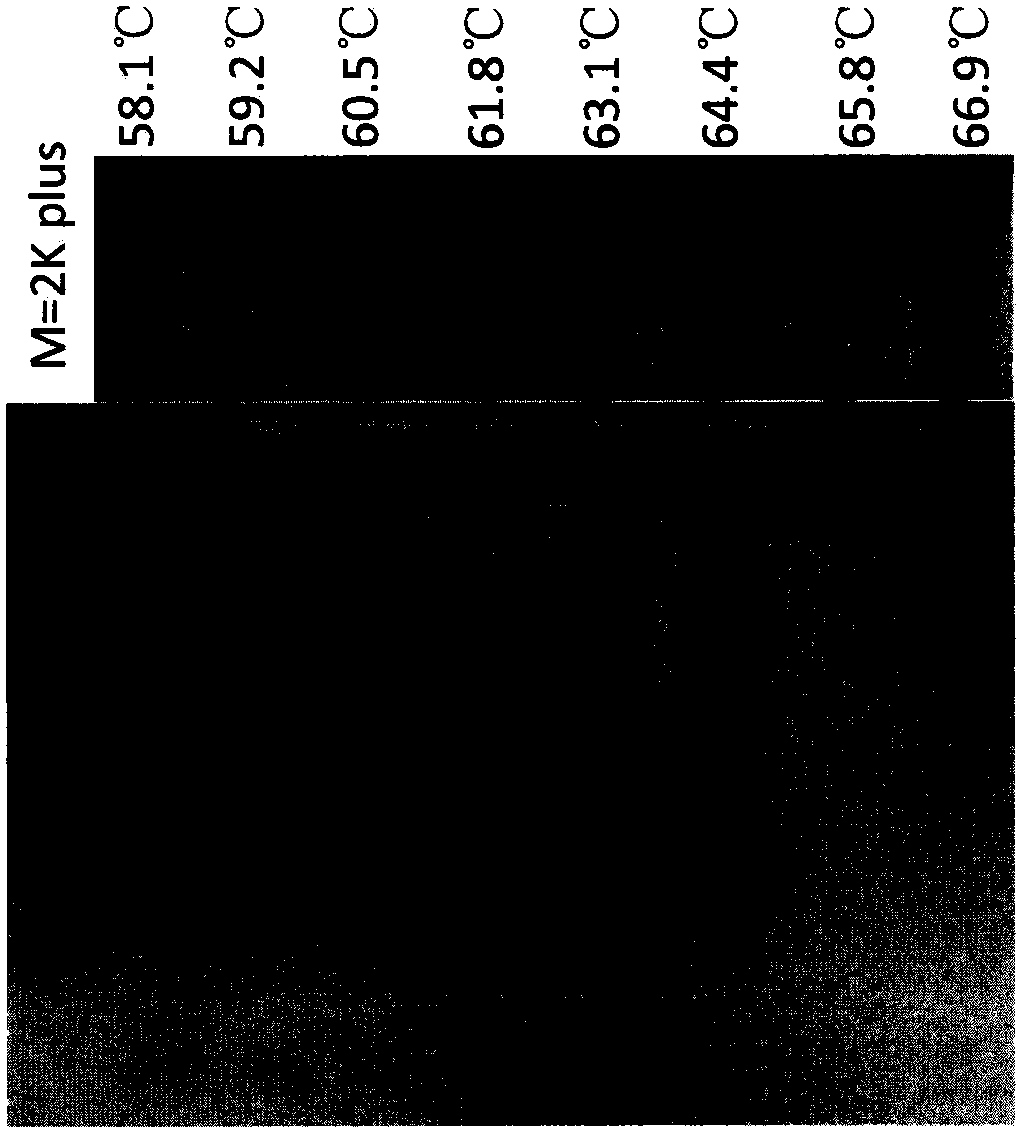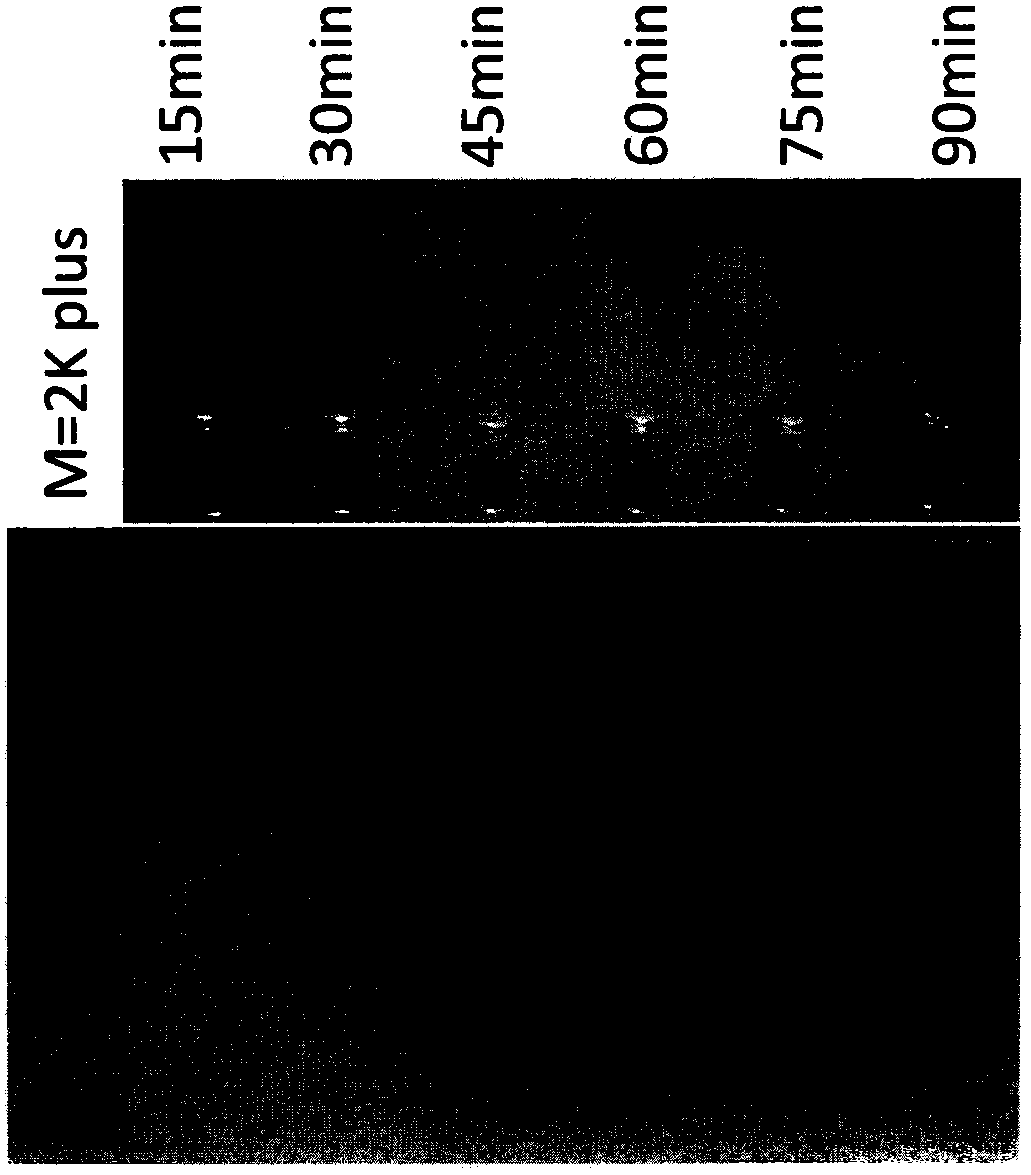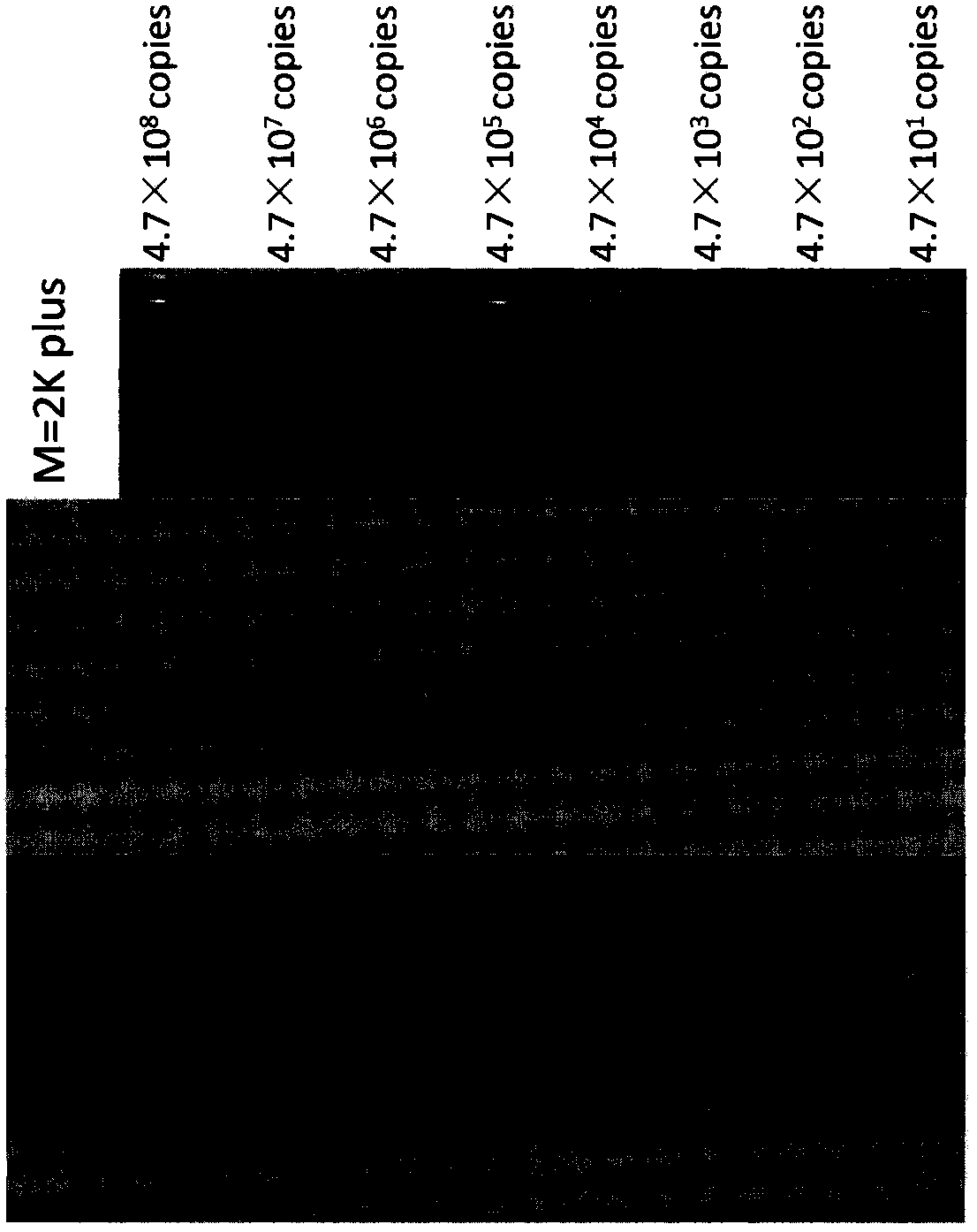Fast detection method for high-resistance botrytis cinerea bacterial strains of carbendazim based on LAMP (loop-mediated isothermal amplification) technology
A technology of Botrytis cinerea and carbendazim, which is applied in the field of rapid detection of carbendazim high resistance to Botrytis cinerea strains based on LAMP technology, and achieves the effects of high sensitivity, reduced drug use and strong specificity
- Summary
- Abstract
- Description
- Claims
- Application Information
AI Technical Summary
Problems solved by technology
Method used
Image
Examples
Embodiment 1
[0035] Embodiment 1 LAMP reaction system optimization
[0036] In order to save detection cost and ensure the stability and reliability of the detection method, Bst DNA polymerase (8U / μL) (0.8-4.0U), Mg 2+ (25mM) concentration (0.6-2.0μL), primer FIP / BIP (40μM) and F3 / B3 (10μM) concentration (0.1-0.5μL), betaine (8M) concentration (0.4-2.0μL), HNB (2.5mM ) concentration (0.4-1.2μL) was optimized, and the best reaction system was determined to be: Bst DNA polymerase (8U / μL) 0.3μL, 10×ThermoPol 1μL, MgCl 2 (25mM) 1.4μL, dNTP (10mM) 1.0μL, FIP (40μM) 0.3μL, BIP (40μM) 0.3μL, F3 (10μM) 0.2μL, B3 (10μM) 0.2μL, betaine (8M) 0.8μL, HNB (2.5mM) 0.8μL, Genomic DNA 0.4μL, sterile ddH 2 O 3.3 μL.
Embodiment 2
[0037] Embodiment 2LAMP reaction condition optimization
[0038] In order to obtain the most suitable reaction temperature and time and ensure the high efficiency of the detection method, the reaction temperature and time in the reaction parameters were optimized, and the reaction temperature and time were respectively 58-65°C ( figure 1 ) and 45-90min ( figure 2) conditions, DNA bands were amplified, and DNA bands were more abundant at 62°C and 60 min, so the optimal reaction temperature and time were 62°C and 60 min, respectively.
Embodiment 3
[0039] Example 3 LAMP reaction sensitivity detection
[0040] In order to determine the lower limit of detection of the LAMP reaction, this experiment PCR amplified the DNA fragment containing the 198-position mutation site, cloned the fragment into the vector pMD-18, transformed Escherichia coli, picked positive transformants, extracted the plasmid, and measured the concentration. , using 10-fold serial dilution as a template for LAMP and PCR amplification, respectively. Finally, the lower limit of detection of LAMP is 10 times of the lower limit of detection of ordinary PCR ( image 3 ).
PUM
 Login to View More
Login to View More Abstract
Description
Claims
Application Information
 Login to View More
Login to View More - R&D
- Intellectual Property
- Life Sciences
- Materials
- Tech Scout
- Unparalleled Data Quality
- Higher Quality Content
- 60% Fewer Hallucinations
Browse by: Latest US Patents, China's latest patents, Technical Efficacy Thesaurus, Application Domain, Technology Topic, Popular Technical Reports.
© 2025 PatSnap. All rights reserved.Legal|Privacy policy|Modern Slavery Act Transparency Statement|Sitemap|About US| Contact US: help@patsnap.com



